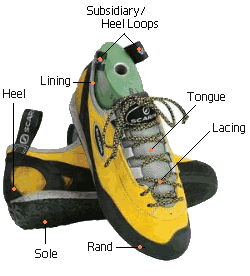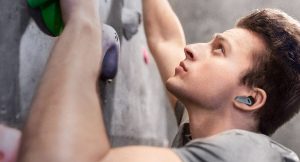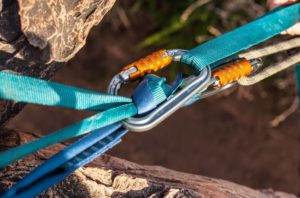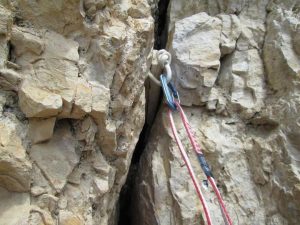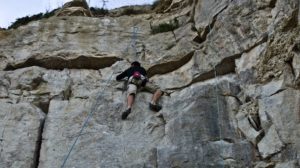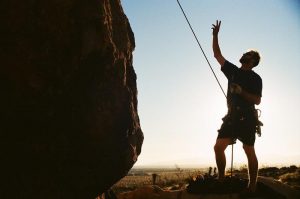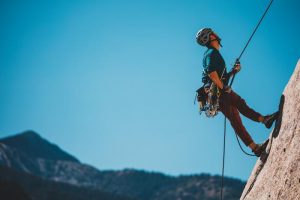The first time you try on a pair of climbing shoes, they’re so snug you’ll feel like one of Cinderella’s stepsisters, cramming your foot into a shoe meant for someone else. Once you try climbing with them, however, you’ll realize that the discomfort is well worth it.
As mentioned before, it is essential to have the equipment which meets the requirements of the Rock Climbing Style you are interested in. The same is also true when it comes to shoes. As the name suggests, Climbing Shoes are purposely manufactured and worn for Rock Climbing.
There are many types of Climbing Shoes available in the market today. When looking for and comparing Climbing Shoes, it is important to know the features shoes can have and understand how they work.
Most rock shoes are low cut and worn sans socks. The uppers are soft and flexible on the top; the soles are made of smooth, stiff (yet pliable) rubber and are s-n-u-g as a ballet slipper. Today’s shoes are made with stickier soles than in the past, which helps climbers push the proverbial envelope.
In this section, take a look at the various components and characteristics of typical Climbing Shoes:
Sole
It refers to the bottom part of the shoe. It provides the needed friction on a specific climbing surface.
It seems counterintuitive, but the smooth sole is what makes the shoes so effective. Cleats can’t bite into rocks, no matter how hard they are. But rock digs into rubber. So the more contact, the better the grip.
Rand
This is the rubber layer above the sole and runs around the shoe.
Tongue
This is the flap that covers the inner part of the shoe. Once the laces are tightened, the tongue should fold nicely to conform to your shin and ankle without causing pressure points.
Heel
Located at the bottom portion at the back of a shoe, the heel should cup your foot’s heel and it also provides height. Take note that if the heels of your shoes are more elevated, your feet will feel more pressure.
Subsidiary/Heel Loop
In general, Rock Climbing requires tight shoes. A heel loop can help you to fit your feet in your shoes. Some models have subsidiary loops near the heel loop.
Lining/Padding
Most Climbing Shoes have lining or padding to give more protection and comfort to the feet.
Lace/Lacing
There are different types of lacing. Most shoes have eyelets, or punched holes often enforced with metal grommets to prevent tearing out, and some use webbing to create a loop through which the laces run. Some even combine these two to make use of the advantages of each mechanism. Some shoes are lace-up, while others are the slipper type. In general, it doesn’t really matter if your shoes are lace-up or not, as long as you are comfortable wearing them.
These are the basic parts and features of Climbing Shoes. Knowing the different parts and characteristics of Climbing Shoes can greatly help you in identifying the type that will suit your needs.
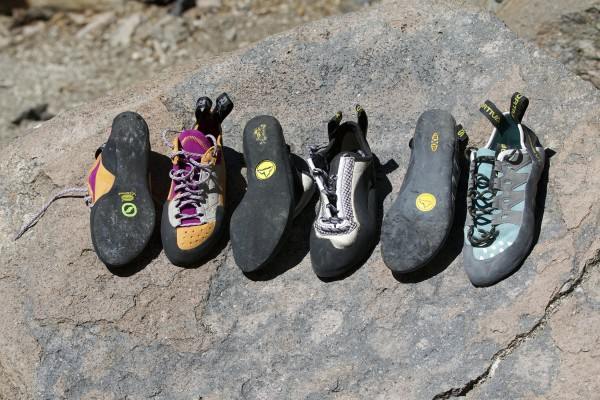
As you’ll see, once you start climbing, your shoes will be called on to do different things depending on the rock and the steepness of the wall you’re on:
- On low-angled smooth granite, the shoes must be flexible enough to maximize rubber-on-rock contact.
- On steep sandstone or sharp granite, the shoes need to be stiff enough to stand on tiny footholds.
- On limestone, a soft stone with a lot of pockets, the shoes need to be thin enough so that you can actually feel for holds with your toes, much like a monkey climbing a tree. Sometimes you’ll have to jam your toes into cracks to gain a foothold when there are no others. This is a rather miserable feeling that will have you hunting for your floppiest slippers when you get home.

